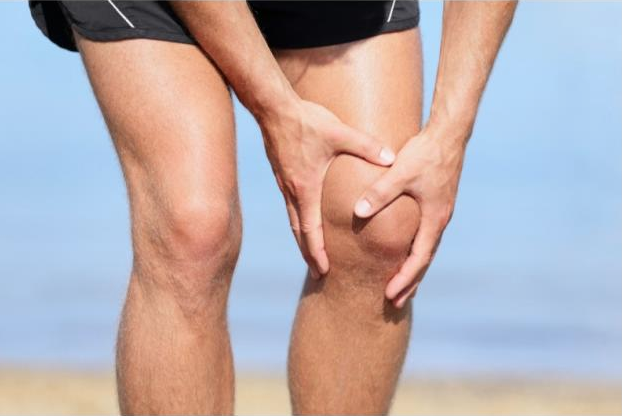Treatment Options to Alleviate the Pain from Jumper’s Knee

Jumper’s Knee is the result of excessive strain and stress from jumping. Basketball players and snow skiers typically exert extreme pressure to their knees. Prolonged strain on the knee joint can cause inflammation due to repetitive impact on the knees from excessive jumping.
CAUSES
The condition of jumper’s knee results from the chronic overuse of the patellar tendon, more commonly known as patellar tendonitis. This article will detail the causes of jumper’s knee and treatment options.
Running and jumping exerts an incredible amount of stress on the knee, the additional force approaches up to 11 times a person’s body weight on the knee joint (Ironman.org). Consider the additional force the knee absorbs from a person weighing 180 pounds, that an additional force of up to 2,000 pounds to the knees.
Repetitive stress and strain on the tendons in your knee can result in tiny rips to the collagen matrix, which will slowly weaken the tissue. Activities such as high impact sports and professions where heavy lifting is often required such as construction work may be susceptible to painful damage to the tendons in the knees.
Experienced physical trainers also examine the injured patient’s ankles, back and neck that often are damaged from the excessive strain on the body from jumping and running such as a hairline fractured ankle.
TREATMENT
The recovery rate and treatment plans are based on the individual’s overall physical condition and the extent of damage that has occurred (patellartendonitis.net). The initial pain and inflammation associated with jumper’s knee can be extreme.
Treatment options for jumper’s knee include resting the knee, applying ice to the injury, compressing the injury and elevating the affected area followed by a rehabilitation program including strengthening exercises. Apply the PRICE principals:
Protection Rest Ice Compression Elevation
Initially apply cold therapy such as a gel ice pack hourly until pain diminishes and swelling begins to subside.
There are over the counter medications to help arrest the pain, however the best treatment is physical therapy. A physical therapist will assess your case and develop an exercise program specifically designed to rehabilitate the knee and a plan for recovery. Remember treatment plans for jumper’s knee are typically slow, but with the expertise of an experienced physical therapist will give you the best opportunity for a complete recovery.
Knee supports also described as jumper’s knee straps help reduce pain and ease the strain on the knee tendons. A simple patella taping technique can also relieve strain and pain on the tendon much as the knee straps.
Stretching exercises routinely recommended for jumper’s knee rehabilitate the quadricep muscles located at the front thigh. Regular physical therapy will begin to lengthen the muscles and reduce stress on the tendon.
Eccentric strengthening exercises are also recommended that help stimulate healing. Squat exercises are an eccentric strengthening exercise performed by slowly squatting downwards and then quickly rising upward, using the good leg to motor up and down.
PLAY IT SAFE
Never attempt any treatment plan without consulting your doctor or physical therapist to ensure that the extent of the injury does not require surgery or that other body parts were not severely damaged from the knee injury. Attempting any treatment option without consulting an expert first may result in a much more severe condition by not fully diagnosing the extent of damage to your body.
Play it safe and get the right treatment plan for your injury.
To learn more about treatment options or to schedule an examination visit our website at moriartypt.com or call us at 845-454-4137